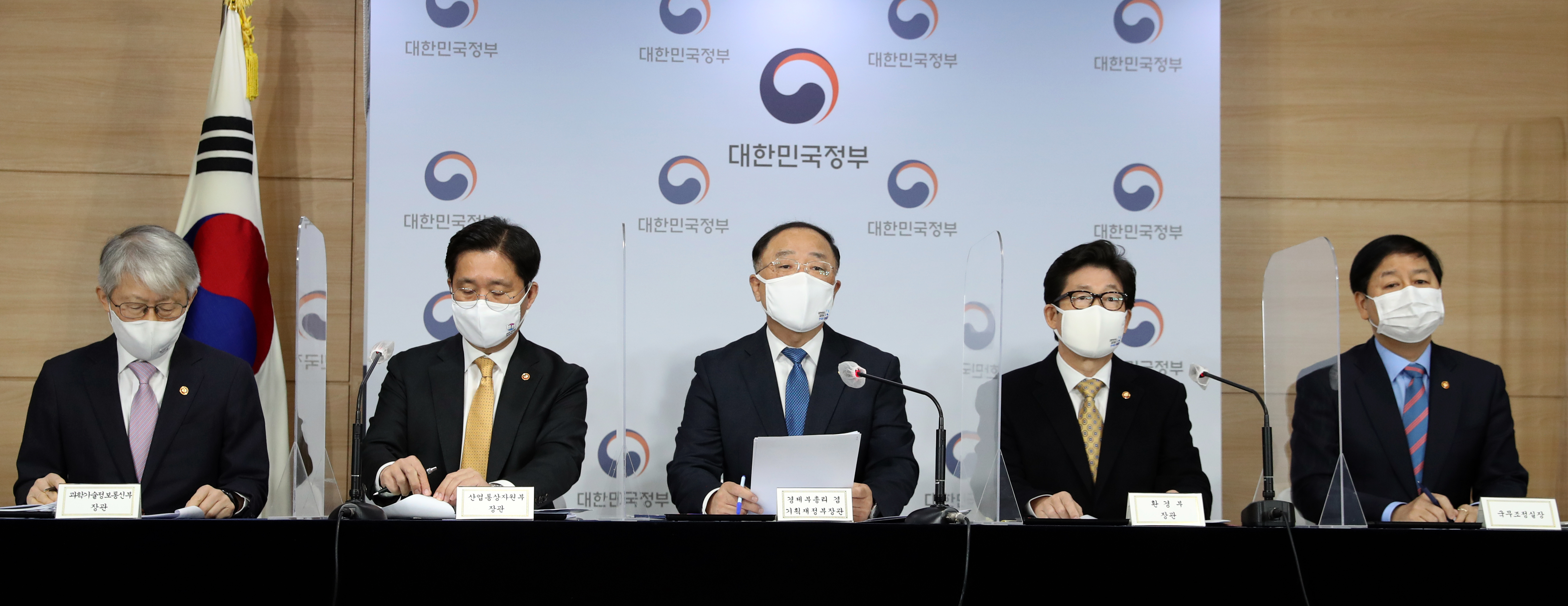
Deputy Prime Minister and Minister of Economy and Finance Hong Nam-ki (center) on Dec. 7 announces with other Cabinet ministers the government's plan to achieve its carbon neutral goal by 2050 at Government Complex-Seoul. From left are Minister of Science and ICT Choi Kiyoung, Minister of Trade, Industry and Energy Sung Yun-mo, Minister Hong and Minister of Environment Cho Myung-rae. (Yonhap News)
By Kim Hyelin and Lee Jihae
The Central Economic Response Headquarters at Government Complex-Seoul on Dec. 7 announced in its 22nd meeting a plan on how the nation will achieve carbon neutrality by 2050.
Deputy Prime Minister and Minister of Economy and Finance Hong Nam-ki told a news conference, "The economic order is changing amid tightening global regulations as each country responds to climate change," adding, "As adoption of carbon neutrality is not a choice but a must, we must actively respond by establishing an economic and social structure centered on reducing greenhouse gases."
Sectors that emit large quantities of CO2 such as steel, cement, petrochemicals and oil refining will also undergo industrial restructuring. For example, steel production will apply electric furnaces and emit hydrogen instead of carbon, and oil refining will adopt a technology that recovers carbon dioxide.
The supply and production of hydrogen- and electric-powered cars will also be expanded. The installation of more charging stations ahead of the nation's planned era of 20 million electric-powered cars is planned, along with stations for hydrogen-fueled vehicles in cities and metropolitan areas.
To create an ecosystem for the new and promising low-carbon industry, the government plans to secure core technology for next-generation batteries such as high-performance lithium secondary batteries. By stimulating the use of green hydrogen, the aim is to convert more than 80% of the country's hydrogen energy into green hydrogen by 2050.
To protect sectors, regions and workers affected by the transition to a carbon neutral society, the government will adopt a system to protect vulnerable industries and people and help them shift to new industrial systems.
The design of systems for things like technological research and development, fiscal support and green finance to boost the foundation of carbon-neutral systems will also be pushed for.
By year's end, Seoul will submit low emission development strategies to the United Nations and raise its Nationally Determined Contributions, or goals for C02 reduction, by 2025 before submission.
kimhyelin211@korea.kr